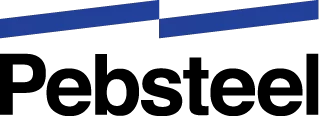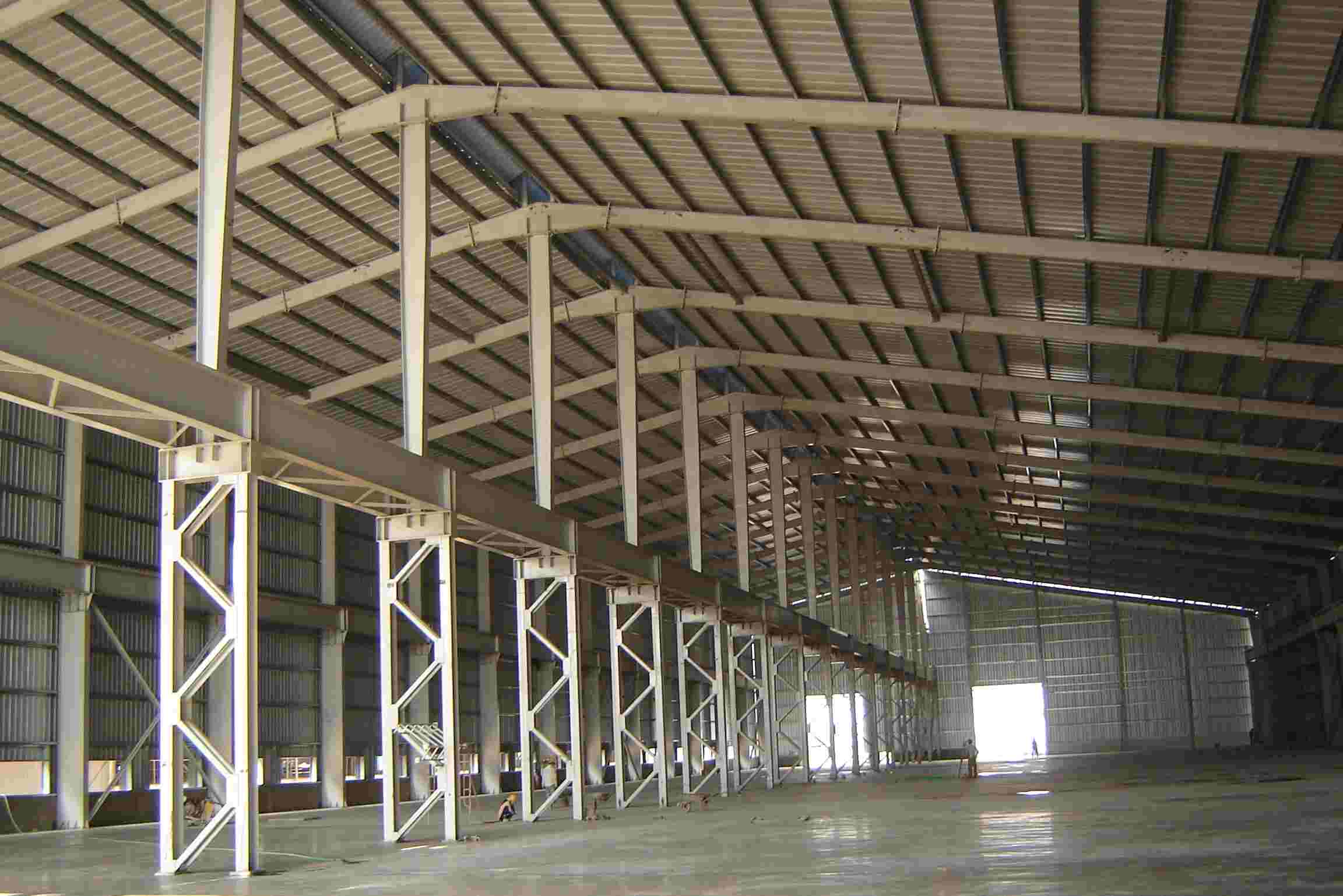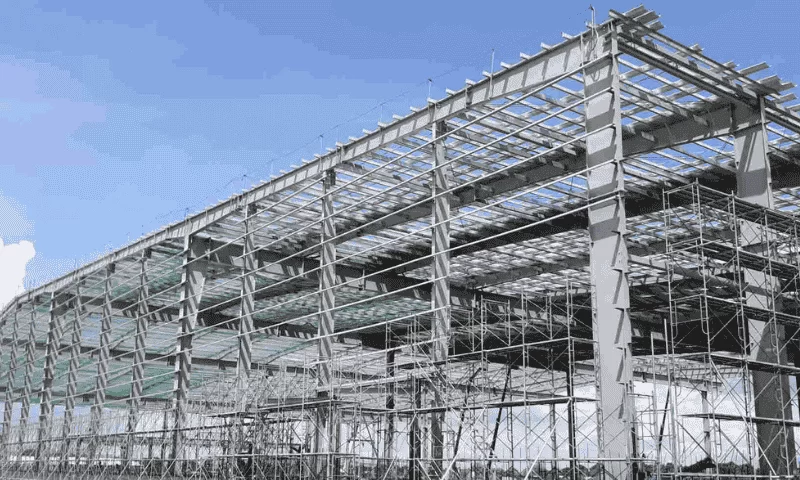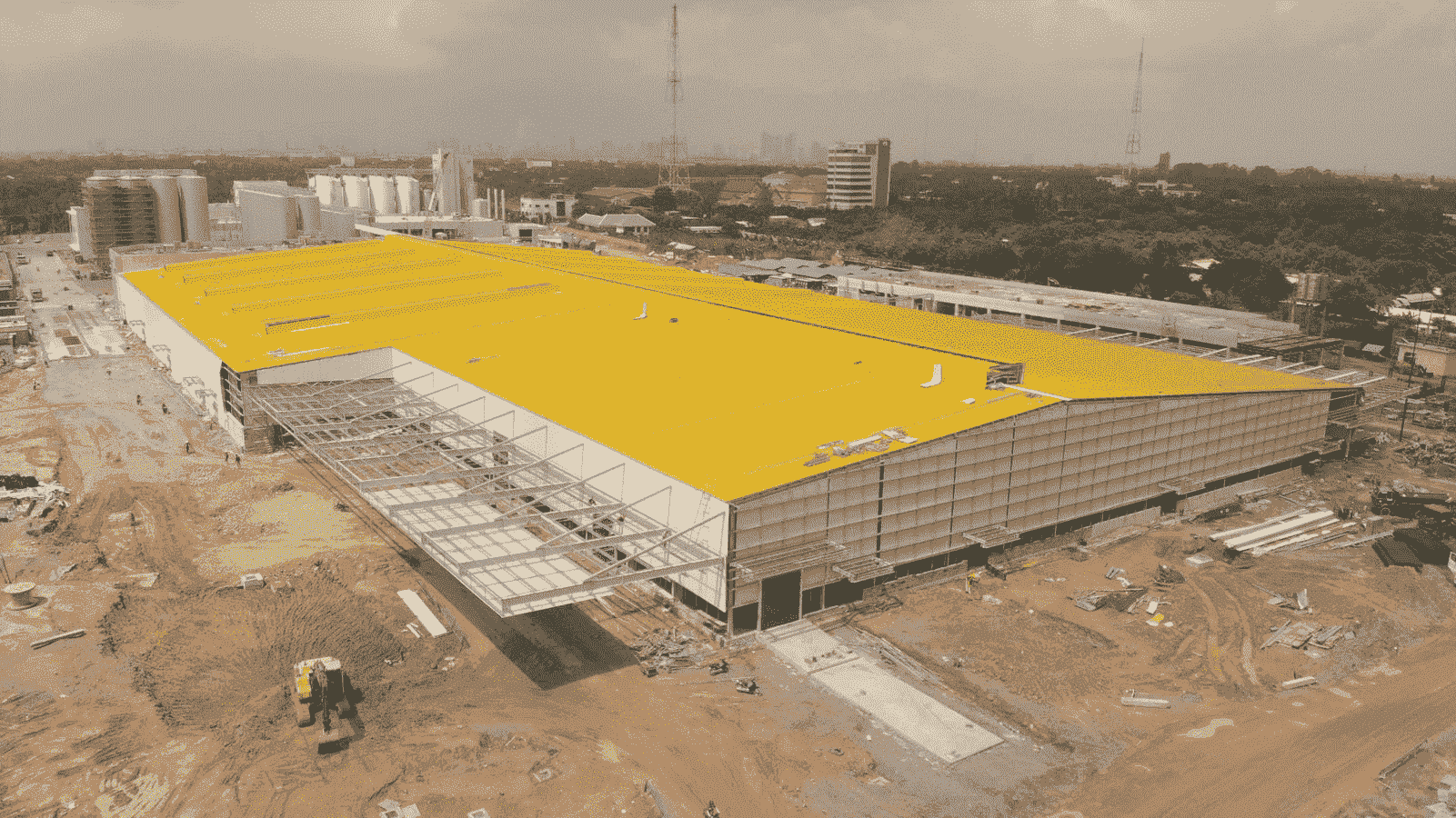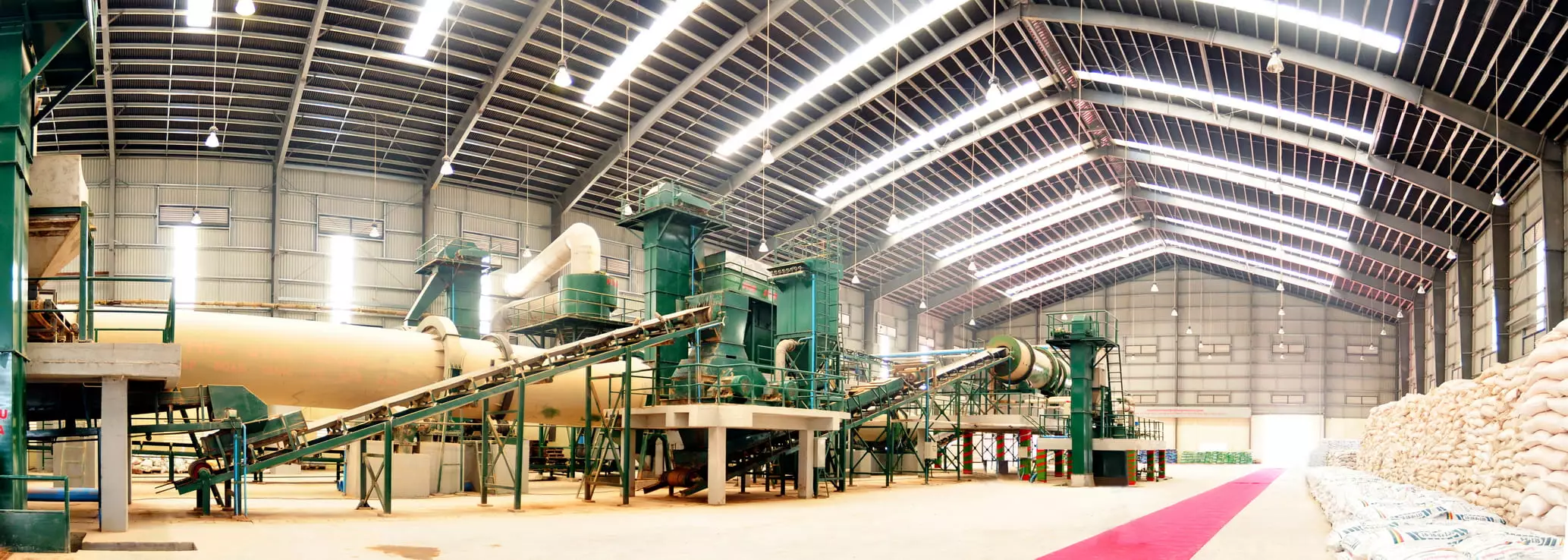You may be uncertain about the process of dismantling old, deteriorated factories or warehouses. This article will provide you with detailed information on the systematic process of dismantling in the construction of factories and warehouses.
1. What is dismantling factories and warehouses?
Dismantling factories and warehouses is the planned and systematic process of demolishing the structures and materials of old, damaged, or unusable warehouses and factories, or those needing relocation to serve other purposes, particularly to make way for new shed fabrication and industrial construction projects.
This process involves many complex stages, requiring professionalism, safety, and compliance with legal and environmental regulations.

The importance of safe and efficient dismantling of factories and warehouses
2. The importance of safe and efficient dismantling
Dismantling in workshop construction plays a crucial role in many cases, for reasons including:
2.1 Safety
- Protecting human health and life
Improper dismantling can lead to serious workplace accidents in warehouse and workshop construction. Therefore, adhering to occupational safety measures and using appropriate dismantling techniques is essential.
- Limiting property damage
Careless dismantling can damage nearby structures or goods inside the warehouse. Planning and careful execution can minimize damage and ensure safety for the surrounding area.
- Environmental protection
The dismantling process can generate dust, noise, and hazardous waste. Implementing environmental protection measures, such as proper waste collection and disposal, can minimize negative environmental impacts.
2.2 Efficiency factors
- Saving time and costs
Efficient dismantling in warehouse construction can save time and costs for the project. Detailed planning, appropriate equipment use, and efficient project management can optimize the dismantling process.
- Minimizing disruptions
Fast dismantling of factories can minimize business disruptions in cases of relocation or renovation. This is particularly important for businesses relying on warehouses for storing goods or manufacturing products.
- Ensuring project timelines
Timely dismantling of factories is essential to ensuring the overall project timeline. Detailed planning and close monitoring can ensure the project is completed on schedule.
2.3 Reasons for relocation, renovation, and closure
- Relocation: When a business needs to move to a new location, dismantling the current workshop is necessary to free up space and transport equipment and materials to the new location.
- Renovation: Dismantling part or all of an industrial warehouse may be necessary to renovate or upgrade the infrastructure of warehouse and workshop buildings. This can improve operational efficiency, increase productivity, or meet new regulatory requirements.
- Closure: When a business ceases operations, dismantling the workshop is necessary to remove structures and return the site to the property owner. Dismantling must be carried out in accordance with environmental and occupational safety regulations.
Choosing reputable and experienced dismantling contractors and workshop construction is essential to ensure safe, efficient dismantling of industrial warehouses and compliance with regulations. Refer to Pebsteel’s website for further information and receive free professional consultation.
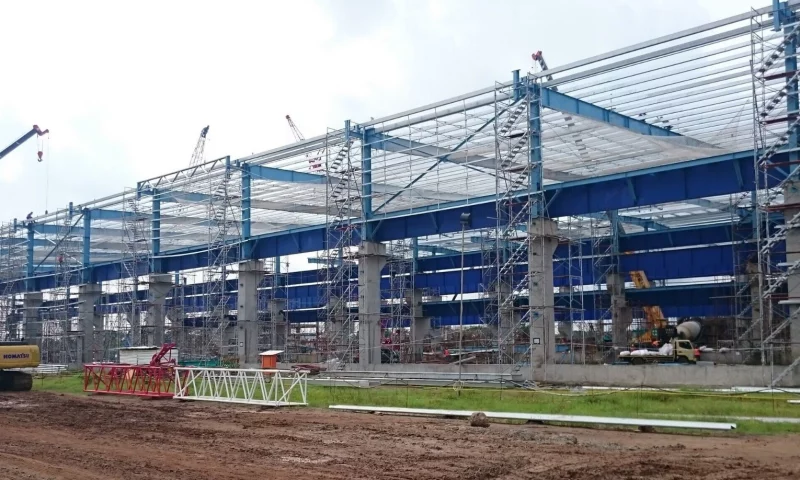
Reasons for relocation, renovation, and closure workshop construction
3. Detailed steps for safe dismantling of warehouses and factories
3.1 Phase 1: Survey and Planning Stage
- Current status survey:
Evaluate the structure, materials, and condition of the warehouse/workshop, including design drawings (if available), potential hazards, and surrounding impacts.
- Dismantling planning:
- Identify appropriate dismantling methods (manual dismantling, machinery use, or a combination of both).
- Develop a detailed construction schedule, including steps and completion times for each step.
- Determine necessary resources (labor, materials, equipment, machinery).
- Estimate dismantling costs.
- Establish occupational safety measures, fire prevention measures.
- Determine waste disposal methods for dismantled materials.
Obtain dismantling permits (if required): Depending on local regulations, dismantling permits may need to be obtained from relevant authorities.
3.2 Phase 2: Preparation for Construction Stage
- Fencing and warning signs: Fence off the construction area, place clear danger warning signs.
- Disconnect power, water, gas connections: Ensure safety before dismantling.
- Interior cleanup: Remove objects, goods, equipment from the dismantling area.
- Prepare personal protective equipment: Provide full personal protective equipment for workers (helmets, goggles, masks, gloves, boots, reflective vests, etc.).
- Prepare machinery, tools: Check and maintain machinery, tools before use.
3.3 Phase 3: Dismantling Construction Stage
- Roof dismantling: Start with auxiliary roofs, canopies, then main roofs. Use safety support measures to avoid collapse.
- Dismantling frame systems: Dismantle in parts, ensuring safety for people and surrounding structures.
- Dismantling walls, partitions: Use appropriate methods for each type of material (brick, concrete, steel, etc.).
- Dismantling foundations: Dismantle the foundation after dismantling the above parts.
- Sorting and handling dismantled materials: Classify materials for reuse, recycling, and waste. Dispose of waste in compliance with environmental regulations.
3.4 Phase 4: Completion and Handover Stage
- Cleanup of the construction site: Clean up the construction area, transport waste to disposal sites.
- Construction result reporting: Report progress, construction results, and any issues to the investor (if any).
- Handover of the site: Hand over the site to the investor after completing cleanup and reporting.
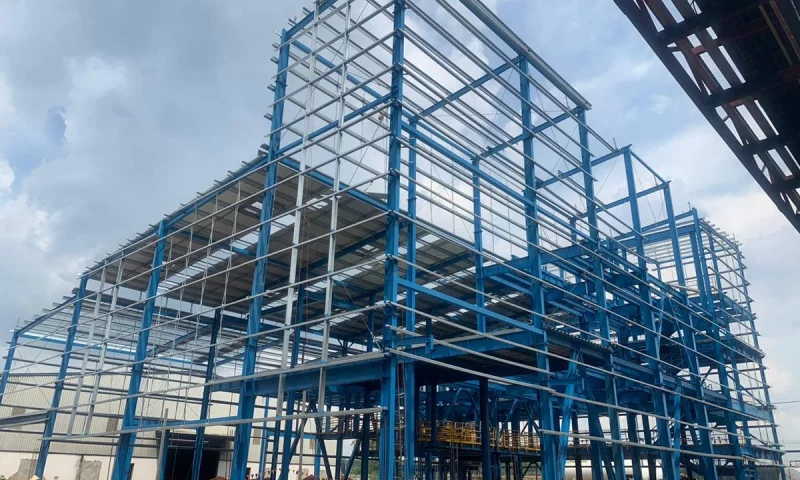
Detailed steps for safely dismantling warehouses and factories
4. Specialized techniques and equipment for dismantling warehouses and factories
Dismantling warehouses and factories requires flexible use of specialized techniques and equipment to ensure safety, efficiency, and compliance with regulations.
4.1 Regarding dismantling techniques in warehouse construction
- Manual dismantling of factories: Use labor and handheld tools for small, accessible parts.
- Dismantling factories with machinery: Apply excavators, diggers, hydraulic hammers, cranes, etc., for large, heavy, and hard-to-reach parts.
- Common dismantling techniques
- Dismantle in sections: Start with the roof, frame, walls, partitions, foundation.
- Dismantle by floors: Suitable for multi-story factories, ensuring safety for structures below.
- Cutting and dividing: Use cutting machines, saws to divide large parts for convenient transportation.
- Hydraulic hammer demolition: Used for sturdy structures like reinforced concrete.
4.2 Regarding specialized equipment
- Excavators, diggers: Excavate, move soil, debris, dismantled materials.
- Hydraulic hammers: Demolish concrete, brick walls, rocks, etc.
- Cranes: Lift, lower, move large, heavy parts.
- Concrete cutting machines: Cut concrete panels, beams, columns, etc.
- Drilling and cutting equipment: Drill, cut holes in walls, beams, steel, etc.
- Trucks: Transport dismantled materials, waste.
- Scaffolding: Provide access, support for workers working at heights.
- Safety equipment: Helmets, goggles, masks, gloves, boots, reflective vests, etc.
Choosing techniques and equipment in the dismantling process of workshop construction requires appropriate considerations regarding the size, structure of the workshop (for instance steel structure design), and construction materials. At the same time, attention should be paid to the level of danger in workshop construction work and careful monitoring of effective dismantling construction time and costs.
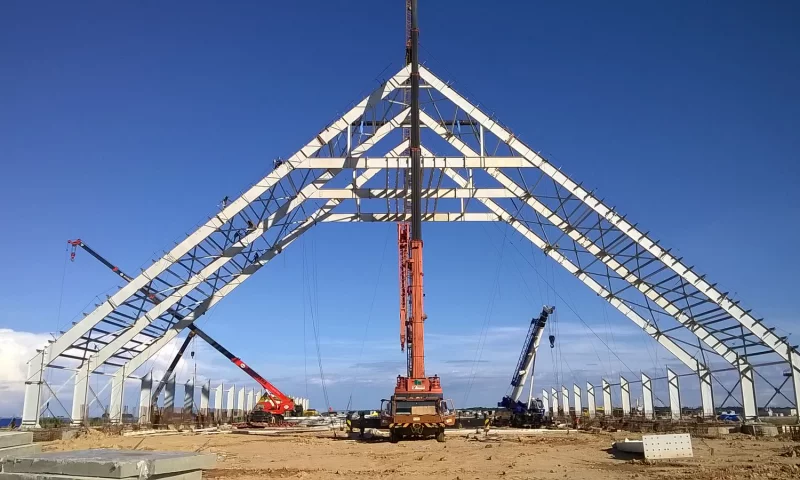
Specialized techniques and equipment in dismantling factories and warehouses
5. Estimating the cost of dismantling workshop buildings
The cost of dismantling workshop buildings depends on many factors such as:
- Workshop scale: Area, structure, workshop construction materials, etc.
- Dismantling method: Manual, mechanical, or a combination of both.
- Workshop location: Easy or difficult to access, need to relocate materials or not.
- Labor and material prices: Depending on the area and time of construction.
- Safety and environmental protection requirements: Need for special measures or not.
To accurately estimate the cost of dismantling workshop buildings, you need to take the following steps:
- Survey the current state of the workshop
- Evaluate the area, structure, and construction materials of the workshop.
- Identify the items that need to be dismantled.
- Assess the difficulty of dismantling workshop buildings.
- Choose a dismantling method
- Based on the structure, workshop construction materials, and workshop location to choose a suitable dismantling method.
- Manual dismantling, machinery, or a combination of both can be used.
- Calculate labor costs
- Refer to the cost of workshop building dismantling labor in the construction area.
- Based on the workload to estimate labor costs.
- Calculate material costs
- Identify the types of materials needed for dismantling work.
- Refer to material prices at the time of construction.
- Estimate material costs based on the workload.
- Calculate other costs: Including material transportation costs, cleanup, insurance, etc.
- Sum up all costs to get an overall estimate of the cost of dismantling workshop buildings.
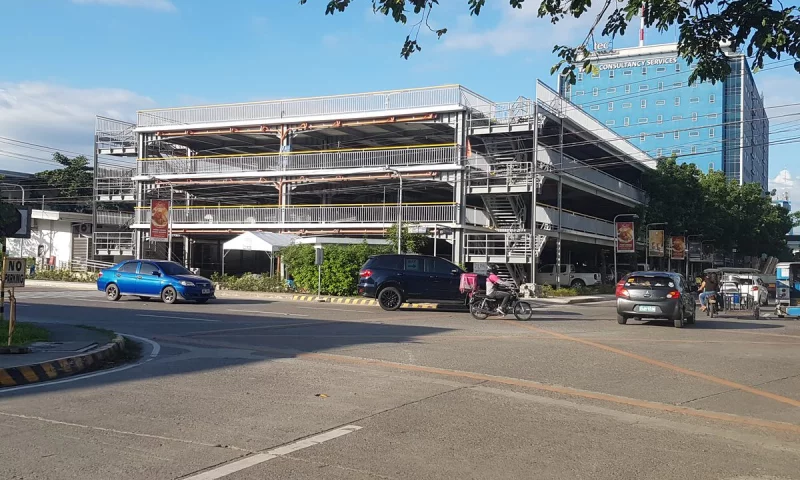
Estimated costs for dismantling factory buildings
6. General considerations when dismantling factories and warehouses
6.1 Before dismantling factories and warehouses
- Thorough survey: Assess the current state, structure, materials, level of danger, detailed drawings.
- Careful planning: Determine goals, methods, schedules, cost estimates, safety measures.
- Complete preparation: Obtain permits, fence off areas, disconnect utilities, move objects, equip protective gear, provide safety training.
6.2 During dismantling factories and warehouses
- Follow the plan: Execute according to the schedule, ensuring safety is top priority.
- Use appropriate machinery: Choose efficient, safe equipment for each task.
- Material sorting: Classify reusable, recyclable materials and waste for proper disposal.
- Safe transportation: Move materials correctly to ensure safety.
6.3 After dismantling factories and warehouses
- Cleanup: Collect waste, clean up the site.
- Thorough handover: Inspect, accept, hand over the site and documentation to the investor.
Dismantling factories and warehouses is a professional, meticulous task that requires strict adherence to occupational safety and environmental protection regulations.
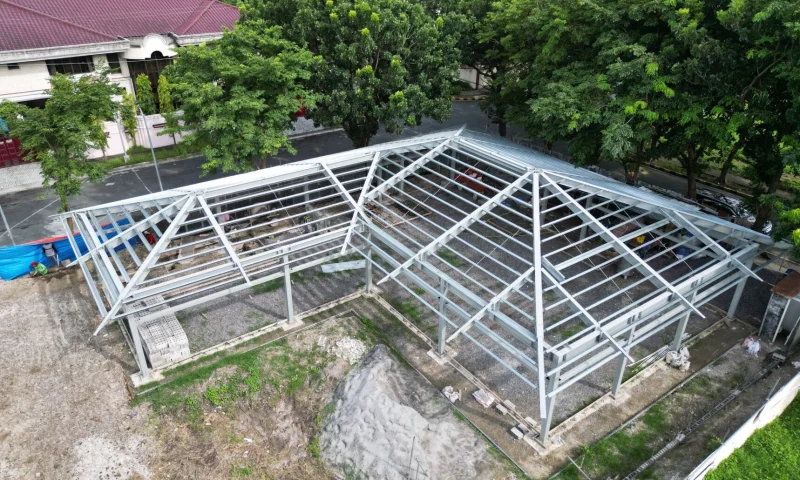
General considerations when dismantling factories and warehouses
Choosing Pebsteel as a reputable contractor will ensure optimal progress, quality, and cost savings. In addition to dismantling services for factories and warehouses, we also provide comprehensive workshop and warehouse construction services.
Pebsteel is committed to delivering high-quality projects that meet all requirements for aesthetics, functionality, and safety. Contact Pebsteel via email at marketing@pebsteel.com.vn or hotline (+84) 908 883 531 for immediate consultation!
*** This article is intended to provide general information about the pre-engineered steel building and steel structure industry only. For further details or clarification based on your needs, please contact Pebsteel directly.
